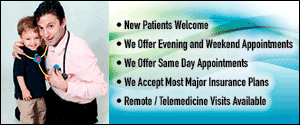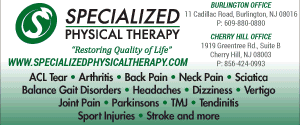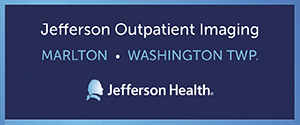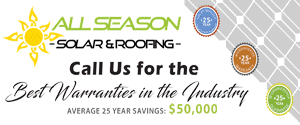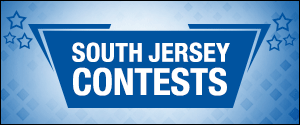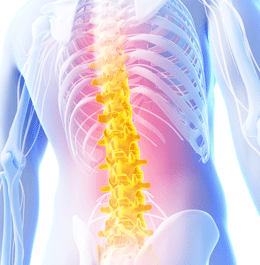
New methods in chiropractic care are transforming therapy.
Complementary and alternative medicine (CAM) therapies are becoming increasingly more accepted not only by the general population but by mainstream health care providers as well. CAM encompasses a diverse group of medical and health care systems, practices and products including herbal supplements, meditation, acupuncture and chiropractic. In recent years, physicians have not only become more likely to recommend a therapy such as chiropractic, but they may even be patients themselves. Chiropractic has recently seen some incredible advances and the technology employed has surpassed the days of manual manipulation. While that kind of chiropractic care is still practiced, there are some offices in the region that are utilizing cutting-edge treatments and the latest technology.
Chiropractic healing
According to the American Chiropractic Association (ACA), chiropractic is a form of health care that focuses on the musculoskeletal systems and nervous systems, along with their effects on general health. It is most often used to treat neuromusculoskeletal complaints including (but not limited to) back pain, neck pain, pain in the arms or legs, or headaches.
“Chiropractic is the art and science of removing nerve interference from the nervous system,” says Dr. Jesse Liebman of the Liebman Wellness Center in Marlton. “The analogy to the nervous system is like a circuit breaker in your house. When you are under stress, you can blow a fuse. The chiropractic approach helps restore any type of interference in the nervous system and get things operating correctly again.”
The way that is done has changed dramatically over the years. In fact, chiropractic has come so far that patients who haven’t seen a chiropractor in many years wouldn’t even recognize some of the technology available at some of the local practices today. Another big change has been the growing acceptance of the field.
Dr. Michael J. O’Keefe, of O’Keefe Chiropractic Center P.A. in Medford, says that these days there is an increasing amount of evidence-based support for alternative treatments, like chiropractic, which is making it more mainstream. The field is continually advancing with newer, more cutting-edge therapies, as well as the latest technology.
New technologies
At O’Keefe Chiropractic Center, the implementation of DTS spinal decompression therapy has been the latest advance and it’s really changing the way patients receive treatment. O’Keefe says he’s seen patients of all ages benefit from this therapy.
“The DTS spinal decompression system is a computer-modulated, traction-based system that delivers a painless therapy to achieve relief for those suffering from neck, back and sciatic pain,” says O’Keefe. “It has been scientifically shown to reduce disc herniation and is different from the traction used in the past. This is new technology.”
It’s not uncommon for patients to ask about inversion therapy, which involves hanging upside down to feel stretched.
O’Keefe says many patients inquire about this, but says that while it may feel good to be stretched, you won’t achieve decompression with an inversion table. His goal is to truly correct the problem—not to feel temporarily better with something like an inversion table.
“A good stretch may make you feel better but it won’t correct what’s causing your pain,” O’Keefe explains. “Our goal is to improve the condition with spinal decompression therapy. We’re not only relieving pain but also improving the functionality of the spine.”
At Liebman Wellness Center, the M6 Robotic Cold Laser is a new therapy that helps stimulate healing by using light energy to repair damaged cells. It can help reduce pain, promote faster healing, reduce inflammation and decrease swelling, among other benefits.
“This is an FDA-approved technology with hundreds of double-blind studies performed to validate its effectiveness,” says Liebman. “The M6 robotic laser that we use here in the office is a higher powered cold laser which penetrates light 3-to-4 inches into the body. We use it on spinal issues as well as shoulders and peripheral neuropathy issues. We’ve definitely found it has worked really well for numbness and tingling caused by peripheral neuropathy from those with diabetes.”
Liebman has also implemented Rapid Release Technology at his office, which breaks up scar tissue and helps relieve pain. Liebman has found it to be particularly effective with the painful results of failed surgeries for the back, neck and knees.
“This is a tool that allows us to address issues with scar tissue which we could never address before without surgery,” Liebman says. “It definitely helps with surgical scars but it can also help with chronic scar tissue which builds up with things like fibromyalgia. We’re finding that it’s been a wonderful tool to those who have dealt with chronic pain.”
While chiropractic care has always been about general health and overall wellness, O’Keefe adds that another advance has simply been better understanding about well-being. That has included a greater emphasis on understanding nutrition.
“We’re finding that a lot of today’s research is focused on ‘whole health’ aspects of life and that includes a lot of research on nutrition,” he explains. “We’re not trying to say that diet and nutrition will fix a back problem, but we are finding that nutrition plays an even greater role than once thought. So we’re doing nutritional assessments here to find out more about vitamin deficiencies and offering general nutritional support. Part of our goal has always been helping patients achieve overall wellness.”
Published (and copyrighted) in South Jersey Magazine, Volume 12, Issue 2 (May, 2015).
For more info on South Jersey Magazine, click here.
To subscribe to South Jersey Magazine, click here.
To advertise in South Jersey Magazine, click here.


